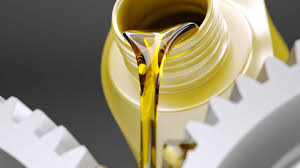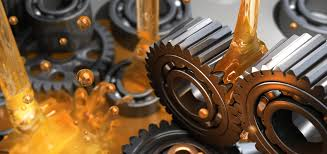
TR-202 Zinc Butyl Octyl Primary Alkyl Dithiophosphate

TR-EPC02 Ethylene-Propylene Copolymer

Lithium 12-Hydroxystearate Lithium Grease Lithium Based Grease

Graphene Best Oil Additive Engine Oil additive

Graphite Powder Graphite Lubricant Dry Graphite Lubricant

MoS2 Friction Modifier Molybdenum Disulfide
ASTM (American Society for Testing Materials) American Society for Testing and Materials grease definition
1) A grease is a solid to semi-solid product formed by dispersing one or several thickeners into one or several liquid lubricants.
2) Can contain other ingredients that can increase special properties
3) Covers mineral oils and synthetic oils as well as all types of thickeners
4) Does not include thickener-free products such as paraffin wax, although their appearance is similar to grease

Grease is a semi-fluid-solid mixture composed of fluid lubricants, thickeners, and additives. The fluid lubricant that does the actual lubrication can be petroleum (mineral) oil, synthetic oil, or vegetable oil. Thickeners give grease its characteristic consistency and are sometimes thought of as the "three-dimensional fiber network" or "sponge" that holds grease in place. Common thickeners are soap and organic or inorganic non-soap thickeners. Most greases on the market are made from a mixture of mineral oil and soap thickening agents. Additives improve performance and protect grease and lubricated surfaces. Grease has been described as a temperature-regulated feed: when the lubricant film between wearing surfaces thins, the resulting heat softens the adjacent grease, which expands and releases oil to restore lubrication. The thickness of the oil film.
Grease can be compared to a sponge, which releases thin oil when squeezed. Of course, the reality is more complicated than this. When static, the thickening agent gathers together due to molecular attraction to form a relatively stable solid structure. Therefore, grease adheres to the lubricated surface under normal temperature and static conditions. When exposed to pressure or heat, the bonds between the thickeners gradually loosen and the grease softens and flows, thus lubricating friction surfaces. After the external force stops acting, the connection between the thickeners is re-formed, and the grease gradually returns to its original consistency. If the grease is subjected to too much external force, the thickener will be completely broken and the grease will be destroyed. (Polytetraureas are different in that they have the unusual property of being able to return to their original structure from an apparently damaged state.)

Fluid lubrication: The metal surface can be completely separated by lubricating oil. There is a 0.0001~0.1mm thick continuous lubricating oil film between the friction surfaces to support the load.
Boundary lubrication: The oil film is extremely thin or discontinuous, and there is tiny local metal friction surface contact. There are only a few layers of lubricating molecular film, and the friction coefficient reaches 0.01~0.1.
Infomak is dedicated to the technology development of special oil additives, combined the Technology of nanomaterials developed dry lubricant and oil additives two series. It accepts payment via Credit Card, T/T, West Union and Paypal. Infomak will ship the goods to customers overseas through FedEx, DHL, by air, or by sea. If you are looking for high-quality lubricant materials, please feel free to contact us and send an inquiry. (emma@rboschco.com).
Hot tags: lubrication,grease, lubrication technology




